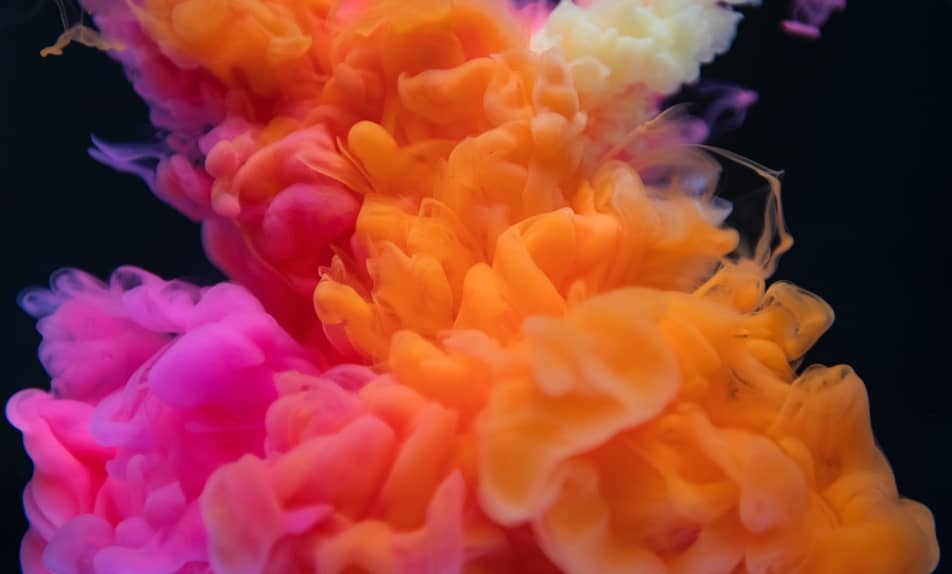List of All Volatile Organic Compounds (VOCs)

Volatile organic compounds (VOCs) are one of the biggest silent threats to human health. Understanding where these chemicals come from, and their threshold limits, is critical to both environmental protection and staying healthy.
However, the challenge is that there are hundreds of VOCs out there. Sometimes referred to as atmospheric photochemicals, another reason they are dangerous is that they exist at room temperature, meaning they are likely in the air all the time. Overall, it’s nearly impossible to avoid emissions of these harmful chemicals.
The only real defense is awareness, so here’s a list of some of the more potent and more common VOCs that can be found in the home and elsewhere:
Alcohol
Not the type you drink, but rather the one used in the home for cleaning and disinfecting, this particular VOC is usually referred to as isopropyl alcohol. It’s prone to photochemical reactions, meaning it evaporates quickly at room temperature and is commonly found in high concentrations.
Ethanol
Also found in many cleaners, such as glass cleaners, laundry detergents and dishwasher detergents, it’s difficult to not come into contact with ethanol. It’s important to be in full compliance with ethanol emissions standards. But the only real way to keep exposure limits low is to make sure there is good ventilation in areas where this chemical is present
Formaldehyde
One of the most dangerous volatile organic compound (VOCs). Present in molded plastics and coatings such as furniture polish, this is a volatile organic compound that can be found in nearly everything. Keep plastic exposure to a minimum and use products that are advertised as formaldehyde-free.
Methyl Chloride
Not only is it one of the most common, but methyl chloride is prone to photochemical reactions, making it extremely volatile and dangerous. It’s typically found in paint removers, aerosol solvents and flame retardant chemicals that are frequently used in fire extinguishers.
However, this VOC can also be considered a negligible photochemical, since it has a rapid rate of evaporation, which makes it difficult for large concentrations to build up in well-ventilated areas.
Nitrogen Oxides (NOx)
These are gases and compounds composed of nitrogen and oxygen. They are emitted from the burning of coal, oil, gas, cigarettes, stoves, wood burning, etc. They have a high photochemical reactivity, and when they do react with sunlight, they create smog, one of the most visible signs of poor air quality.
Concentrations in the home should be low by making sure to burn things outside, but keep an eye on local air conditions as these chemicals can significantly harm air quality. Be sure to clean surfaces exposed to NO2. The can form coatings on surfaces in the home, which when heated can emit harmful chemicals in the air. .
Propane
Used most commonly in gas grills, heaters and camping lights, propane is one of the most useful VOCs. But it is classified by relevant bodies as “Very Volatile,” meaning it’s easy for large concentrations to accumulate. But because of this, regulation is tight, so make sure all equipment is in compliance with the law to help maintain safe emissions levels.
Acetone
Found in old-fashioned nail polish removers as well as furniture polish and wallpaper, it’s likely acetone is in most homes. However, alternatives to these products do exist that do not use these harmful chemicals.
Carbon Disulfide
The most common source of this chemical is chlorinated tap water. To ensure compliance with health standards, test water frequently and use filtration systems when concentrations are too high. If this is not possible, then bottled water is the way to go.
Dichlorobenzene
Deodorizers and preservatives are commonly used when storing clothes and other sensitive materials for long periods of time. Yet most of these products contain dichlorobenzene, a harmful VOC. Look for products that do not use these this harmful chemical to keep vocs emission low.
Terpene
Soaps and laundry detergents will usually have at least some terpene in them, meaning most people come into contact with them on a daily basis. Alternatives exists, but the best way to avoid exposure is to make sure the area in use is well-ventilated.
Toluene
For those who love to do DIY projects, know that toluene is found in many of the paints and coatings on today’s market. There is such thing as a safe level, so make sure any paints/coatings used are in compliance with all rules and regulations. And also be sure to ventilate areas when painting. However, it is possible to find toluene-free pain to avoid exposure altogether.
Xylene
Xylene is emitted from car tailpipes, meaning exposure risk is highest when sitting in an idling car or in traffic. Turn on the car’s air filtration system, and make sure to never run a car engine in areas without proper ventilation.
Butane
SImilar to propane, butane is used frequently in grills and heaters, as well as blow torches. Always use these products outside and ventilate the area in the event of a leak.
Pesticides
Whether for helping to keep the lawn green or the garden free of damaging insects, most homes make use of pesticides. Some of the stronger ones, such as DDT, are illegal in many countries, so ensure full compliance with the law when fighting pests.
Keeping the Home Safe
Because they’re found in the air, VOC concentrations tend to be highest in the home. It’s important to be smart about their use and to also know how to limit exposure. Here are some additional resources on VOCs:
-
What Are the VOCs at Home? Learn more about the different chemicals in the home and how to make sure these volatile organic compounds don’t pose excessive health risks.
-
How to Remove VOCs. VOC emissions are unavoidable, but there are ways to get rid of them.
-
Sources of VOCs. Find out what are some other sources of volatile organic compounds to be able to limit VOC emissions and maintain indoor air quality.
